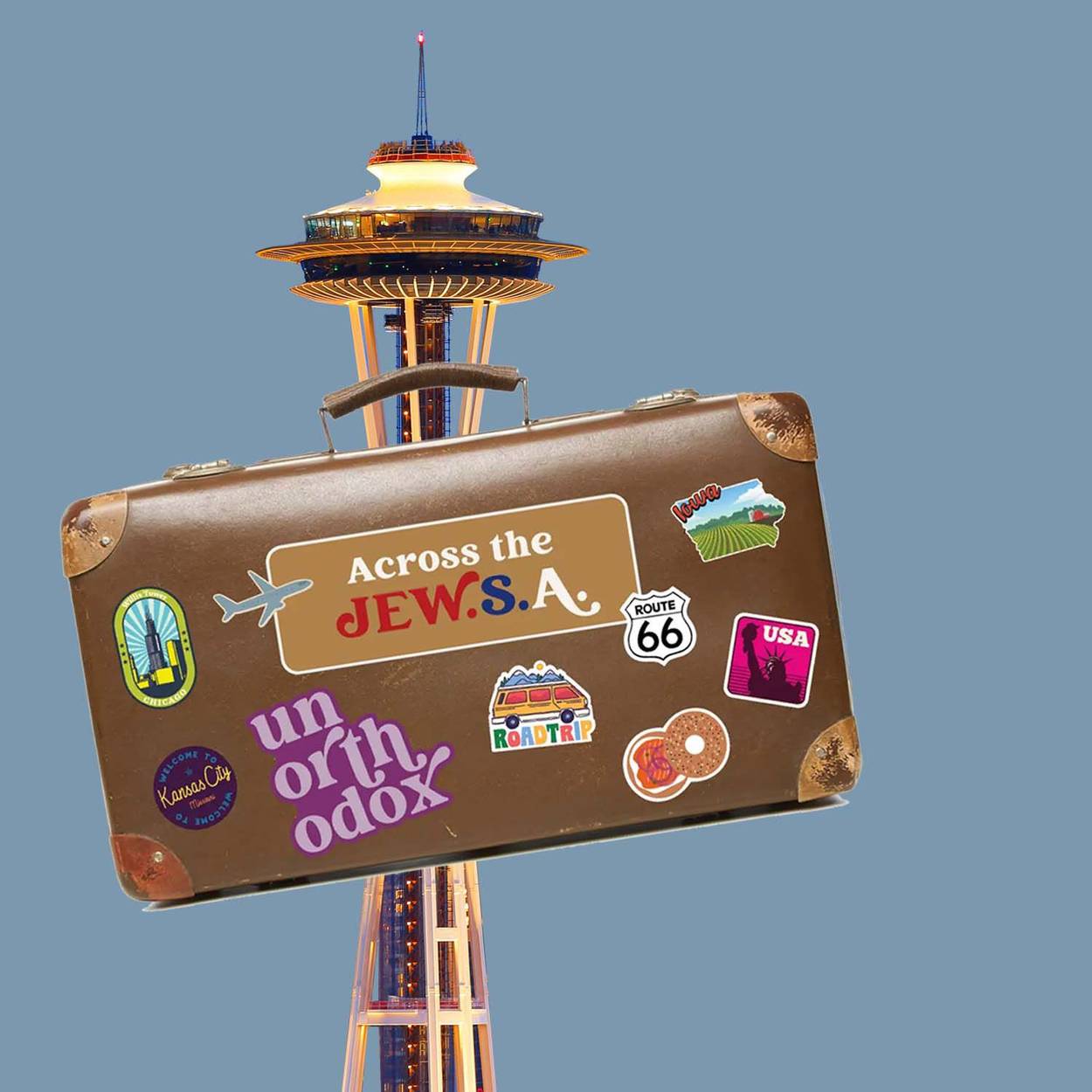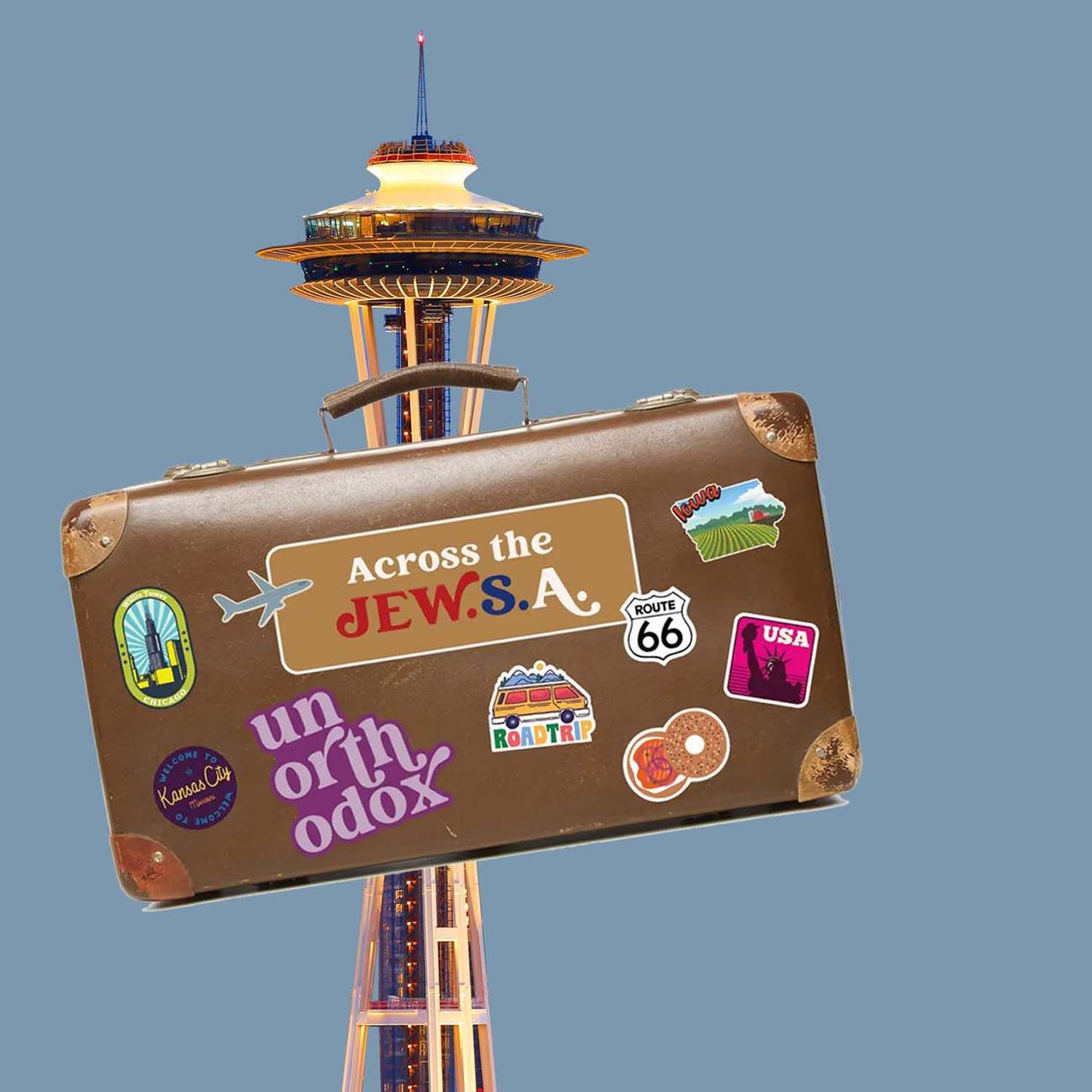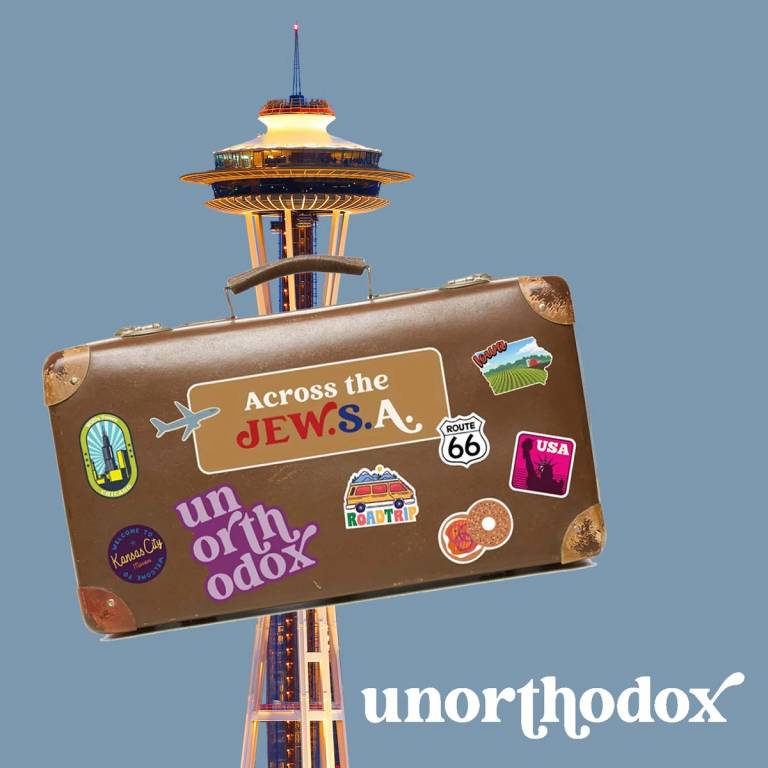The Flavor of Jewish Seattle
Exploring Sephardic life—and food—on a trip Across the JEW.S.A




When the crew of Unorthodox—which, according to God and iTunes is the universe’s leading Jewish podcast—decided to go out on a journey Across the JEW.S.A, one of our guiding principles was this: Don’t be Ashkenormative.
The word, in case you’re not familiar, describes a state of mind in which one assumes that Ashkenazi Jewish life and culture is basically the norm for all American Jewish life and culture—which, hallelujah, isn’t the case. We wanted to shine a light—or a microphone—on our Sephardic brothers and sisters. And so, naturally, we packed our bags and flew to Seattle, where Sephardic Jews had settled in the early 1900s and which is now home to the third-largest Sephardic Jewish community in the country, accounting for 5,000 out of the Emerald City’s 70,000 Jews.
The first Sephardic Jews came to Seattle in 1902, when Jacob Policar and Solomon Calvo arrived from the Turkish island of Marmara, then part of the Ottoman Empire. They soon met Nissim Alhadeff, who arrived from the Greek island of Rhodes, also then under Ottoman control. Today, many of Seattle’s Sephardic Jews trace their roots to either Turkey or Rhodes, with the two main Orthodox synagogues, Sephardic Bikur Holim and Ezra Bessaroth, reflecting this dual heritage.
There’s a reason why Seattle appealed to Jews used to living by the water: Puget Sound may not boast similar climate to the that of the Mediterranean, but trade, fishing, and the other practices that come with life on the shoreline were as common in the Pacific Northwest as they were in the Middle East. By the 1920s, Seattle’s Sephardic population grew to support dozens of shops in and around Pike Place. While many of those shops have shut down or moved elsewhere, you can still find Sephardi-owned stores like Three Girls Bakery, Pure Food Fish Market, and Sweetie’s Candy dotted around Pike Place.
After doing our part to accept as many samples as possible from the Pike Place food stalls, we spent the evening in Seward Park, which is home to the bulk of Seattle’s Sephardi Jews, joining Las Frutikas, a Tu B’Shevat Seder. Plenty of Jews all over the world hold a Seder for the New Year of the Trees, but it’s especially common and important in many Sephardic communities. This was a sold-out event—the first in-person event since the start of the COVID-19 pandemic—and the first time the city’s two Sephardic shuls had combined their Frutikas Seders in decades.
The event was introduced by Jeffrey Solam, the president of Ezra Bessaroth (lovingly referred to as “Ezzie Bezzie” by some of its members), and by Miri Azose Tilson, new board president of Sephardic Bikur Holim, and the first female president in the synagogue’s history. Then, all of a sudden, there were dozens of kids on stage, reading blessings over the Tu B’Shevat meal in English, Hebrew, and Ladino, in front of hundreds of people packed around tables full of dates, pomegranates, and biscochos.
We met a cross section of the Sephardic community that night: the 90-year-old former leader of Ezzie Bezzie’s Ladies Auxiliary baking group, kids speaking Ladino in public for their first time, grandparents seated next to their grandkids, a rabbi emeritus next to his old synagogue president, a teacher, a picture-book writer working to make Sephardi stories mainstream, and so many others. The community is impossibly vibrant, and inextricably interwoven.
You’ll hear some of what they had to say in this installment of Across the JEW.S.A. They were frank about the questions facing their community—questions faced, in some way or another, by Jewish communities all over the country. When should divisions—between synagogues, between Ashkenazi and Sephardic, between Jew and gentile—be ignored, and when should they be maintained? How do you encourage a younger generation to learn how to make traditional foods that, while delicious, are really quite hard to do right, and easier to buy from a store? How can you preserve a language, Ladino, that so few people speak at home anymore, especially when learning Hebrew seems equally, if not more, important?
Of course, there’s a lot you won’t hear. Thirty-six hours may be too little time to uncover every corner of a community, but it’s certainly way too much time for a podcast episode. For one thing, Lea Almo Lipman served us some amazing Sephardic food, for which we and our stomachs are incredibly indebted. More broadly, there’s a whole other story to be told on the preservation of Ladino—and another on the preservation of Ladino just through hip-hop. There’s a story about the Sephardic studies program at the University of Washington, one of very few such programs in the world. Some of that particular story has been told in Tablet; some has yet to be told. It’s a complicated story, one with “Safeway genizahs” of centuries-old family documents only recently translated by an expert professor, but also one in which many of the people we spoke to have felt it necessary to distance themselves from that professor and that program. Getting into all that will take another 36 hours in Seattle, if not longer.
Perhaps most importantly of all, though, you will hear us eat some very good smoked salmon, and learn a Ladino phrase with roughly the same meaning as “oy vey.” Lord knows we can never have enough phrases like that at our disposal.

Across the JEW.S.A. was created with support from the Jewish Federations of North America.
Tablet Studios is the premier destination for smart and entertaining Jewish audio content. Our podcasts include Unorthodox, What Really Matters, Take One, and the limited-run series Gatecrashers, Adventures with Dead Jews, Radioactive: The Father Coughlin Story, and The Franchise.